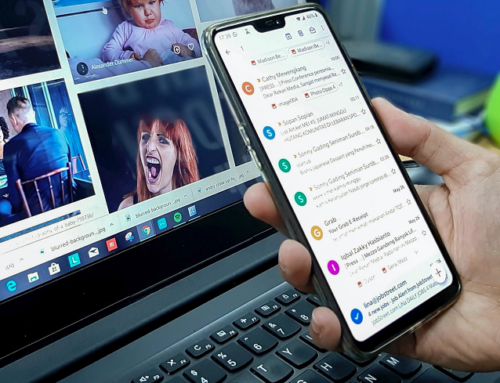When you’re out looking for information on how you can improve your accounts receivable performance, you can get inundated with information on automated accounts receivable software.
This company claims you can save this much time, while that company claims it will help you get paid X% faster. While some of this may be true, it’s hard to really grasp what automated accounts receivable software can do for you when it’s just the company telling you what to expect. That’s why it’s important to hear real results from real companies across many different industries and different company sizes.
In this whitepaper, we’ve compiled real stories from real companies who have used and seen benefits from automated accounts receivable software. Their benefits and usage of the software all differ across their industries, but one thing remains the same: their accounts receivable performance improved.
DECREASING DSO
One of the most common and widely used key performance indicators used in the accounts receivable industry is days sales outstanding. This metric helps companies to decide if they are collecting the right amount in comparison to what they’re selling. For companies like Tagua Gunleather, they wanted a way to decrease their days sales outstanding while also increasing their sales. They were able to find the solution to this in automated accounts receivable software.
Tagua Gunleather, located in Miami, Florida, manufactures and sells leather gun holsters, carriers and other weapon accessories. Tagua has been in business for over 10 years creating premium leather items from 100 percent genuine cowhide. Customers of Tagua Gunleather can either purchase their products straight from their e-commerce website or they can be purchased in one of the many retailers that carry Tagua Gunleather items. For those retailers carrying their products, Tagua Gunleather is extending credit terms and collecting on invoices, which is where the need for a solution to streamline their accounts receivable process arises.
Tagua Gunleather first started using automated accounts receivable software in 2015 while on QuickBooks. Due to significant company growth in marketing and operations, the company had to put their use of Lockstep Collect on hold as they made an ERP migration to Microsoft Dynamics NAV in 2016. As soon as they were implemented, Tagua Gunleather was itching to get back to using Lockstep Collect automated accounts receivable software for their collections.
Sincle reimplementing Lockstep Collect, Flam has seen success in just a few months. In two months, their DSO has decreased by 26% to 44 days. With Lockstep Collect, Tagua Gunleather customers can access their account online to see statements, invoices, credit memos and pay their bill. Customers were eager to have this feature back and Tagua Gunleather was eager to have a one-click option back, eliminating the additional task of sending each customer these important documents.
“In the collections world, only the earliest bird eats. So if you lose time, or if there’s a problem and it takes a minute more, it could break that deal,” Flam explained. “So the possibility of the customer to have access online and pay without calling them of them calling us, just send them an email. It’s great.”
Tagua Gunleather is setting new goals for their use of Lockstep Collect and extending the product beyond their collections department. Flam teamed up with their sales department to send a mass email blast to all customers with a sales promo flyer. However, Flam indicated to customers that they could only receive this deal if their balance is clear. Of the 2,400 customers that received the email, 37 percent have opened it and, in just two days, Tagua Gunleather was able to sell 2 deals worth over $1,000. “It’s already a success and I’m trying to use every single department in order to collect,” Flam said
Decreasing DSO doesn’t just look nice in the reports you hand out to executives, but it opens doors in other departments, as well. Since Tagua made it a point to decrease their outstanding accounts receivable, they were able to sell even more and offer more to their customers. Without the cash flow there from the invoices they collected on, it wouldn’t have been possible.
ELIMINATING BAD DEBT
There are many accounts receivable departments still using spreadsheets and highlighters to manage their accounts and tell them when to make calls. Often times tactics like this, however, end up costing a company by causing them to collect on their open accounts too slowly. These back ups on cash end up forcing a company to take out loans and build up bad debt. This is true not only for small companies, but for companies with many large accounts too. Bitly was prone to having slow cash flow due to their manual processes, as well.
Bitly was founded in 2008 as a link shortening service, allowing marketers and businesses to share information with customers and prospects without running into ridiculously long URLs. Bitly quickly expanded their product offerings, allowing companies greater control over their marketing tools. Customers of Bitly can now brand their shortened URLs driving a higher clickthru rate, gain real-time analytics on their shared URLs, data management and more. Of these customers, 75 percent are Fortune 500 companies and popular name brands such as Nike, Spotify, Pepsi, Progressive, Keurig, Buzzfeed, Chegg and more.
Before using an automated accounts receivable software, Bitly’s collection process was extremely manual. The A/R specialist would export an aging report filtered by aging buckets, from 1-30 days past due to over 120 days past due. From there, they would sort each bucket by the highest amount and begin sending out emails one-by-one to each customer. If the customer didn’t respond, the A/R specialist would pick up the phone and call the customer. With 1,200 invoices created a month, this manual process was cumbersome for one person to handle.
Now that they are using an automated accounts receivable software, many of their previously manual tasks are being handled by an automated workflow. Once their invoices are created in their ERP system, an automated email with invoice information is automatically sent to their customers, with reminders being sent once a week until the invoice is paid. All that is left for their collectors to do is manage customer responses and disputes.
These automated activities have cut their staff work time in half, according to their Director of Finance. Even with only half the amount of work, Bitly has seen dramatic changes to their key performance indicators in their first year of implementation. Bitly’s collection effectiveness index increased from 50 percent to 75 percent and has stayed their month over month for the
entirety of 2017. Their past due percentage has decreased from 40 percent a month to 25 percent a month, as well. Overall, Bitly has seen a significant decrease in bad debt. “Our A/R specialist has more time to concentrate on customers who have questions and disputed accounts, we have more time to spend with them and haven’t had bad debt for over three months,” Bitly Director of Finance explained.
Using an automated accounts receivable software to manage their accounts receivable didn’t just make their work easier, but it made it more efficient and accurate. Since their collectors no longer were forced to spend their time completing manual tasks, they were able to open cash flow and reduce bad debt in the business.
SAVING TIME
Sending emails, writing collection letters, stuffing envelopes with invoices; these are typical tasks associated with accounts receivable. These tasks can add up to at least a full 8 hours a day – usually even more! And this is repeated almost every week. Obviously these are important activities to complete; however, they don’t have to be done manually. They can be automated, while still being personalized to convey your companies collection preferences to your customers. Once automated, this can save a company’s accounts receivable team an immense amount of time. Take for example, MRI Software, who was able to save 400 hours a month.
MRI Software dominates the real estate management software market with their collection of suites, from financial and lease management to reporting tools and more. MRI also offers software add-ons to complement and enhance their core product. Their SaaS product sells to clients in the real estate industry, such as residential or commercial property managers, real estate investors and developers, mostly on a subscription basis.
From 2017 to 2018, MRI experienced expansive growth having acquired six different companies from around the world, expanding their reach from beyond North America to Europe, Asia, Australia, the Middle East and Africa. In just a few months, MRI expanded their staff from 600 employees to a total of 1,000 MRI team members. In order to continue on this path of success, MRI Software needed a way to scale and improve on current accounts receivable processes – they chose to implement automated accounts receivable software.
After the acquisitions, MRI was tasked with collecting on their new client’s open accounts receivable. With help from Lockstep Collect automated accounts receivable software, the accounts receivable team was able to take a deeper look at the underlying issues and reconcile the accounts quickly.
“We had one acquisition where there was a lot of open A/R that we couldn’t figure out why it wasn’t getting paid. In being able to run these manager A/R reports , you can see where your problems are more easily and it makes you think about your open A/R, what you should be spending your time on and the problems you’re encountering. There’s a very real payoff in that it forces you to start thinking about what you’re looking at, instead of just going through the motions,” Russo explained.
Not only did MRI find it possible to save 400 hours of time a month because they began automating their communications with customers, but they were able to spend that additional time analyzing their troubled accounts and put in place a better process for their collections efforts.
REDUCING OPEN ACCOUNTS RECEIVABLE
It’s not uncommon for a B2B company to only accept cash or check for payments. Some might accept credit card payments, but they are taking card numbers over the phone and this isn’t the most efficient or secure way to be accepting payments. With all of the technology that we now possess, it seems very mundane to only offer the ability to accept cash and checks. Your customer is forced to use envelopes and stamps, you have to wait for it to come through the mail and, hopefully, it makes it to your department on time. This process is outdated and leaves your department one step behind on collecting your open invoices on time. Companies that are offering ACH or credit card payments via an online bill pay portal are seeing a quicker turnover ratio and reducing outstanding accounts receivable, like Polyportables.
PolyPortables, LLC. has grown tremendously since their inception date in 1972. As a global leader in the manufacturing of portable restrooms, hand wash stations, deodorizers and other sanitary products, the company expanded to a 64,000 square foot facility in their headquarters in Dahlonega, Georgia and an additional 12,000 square foot facility dedicated to manufacturing deodorizers. In 2015, the demand for PolyPortable’s top-ofthe-line thermoforming manufactured portable restrooms led the company to partner with 2 rotational molding facilities; Innovative Rotational Molding in California and Quality Holdings, LLC. in Hartwell Georgia.
Despite multiple locations to keep track of and a large customer base, PolyPortables was still using the old spreadsheet and highlighter method to keep track of their accounts receivable. All their future tasks, including upcoming collection calls, collection letters and invoice reminders were scheduled in Outlook. PolyPortables needed a more efficient way of managing their collections. This is when Polyportables turned to an automated accounts receivable software, Lockstep Collect.
Without an online bill pay system, PolyPortables was doing what many other companies use in order to collect payment; mailed paper checks or accepting credit card payments over the phone.
It was taking about 10 minutes per phone call in order for the representatives to find the client’s account, confirm amounts, write down the credit card information and then keying in the
information after the phone call. Although this is still an option for any of their customers who would like to use it, an overwhelming majority prefer using the online bill pay system. PolyPortables simply sends out an email to customers with a secure link that takes them to a customer portal where the invoice can be paid online. So far, they’ve seen over $1 million in online transactions since implementing the collections system and 22 hours of time saved.
“In today’s fast paced world, they don’t have time to necessarily stop and receive a phone call from us, so we’ve noticed we call sometimes and get ignored, no one answers or it
goes to an answering machine,” said Credit Manager Benjamin Burford. “Five to 10 minutes later someone has paid their bill online from their company because no one wants to talk and be scolded, so they’d rather just go online and pay.”
Automated accounts receivable software allowed Polyportables to, not only collect more cash, but do it with less effort. They barely had to encourage customers to pay before they went and took matters into their own hands. Using accounts receivable software takes away the manual work, while opening up additional cash flow.
Want to lower your DSO now? And make your staff happier?
Get a personalized demo of Lockstep Collect today.




